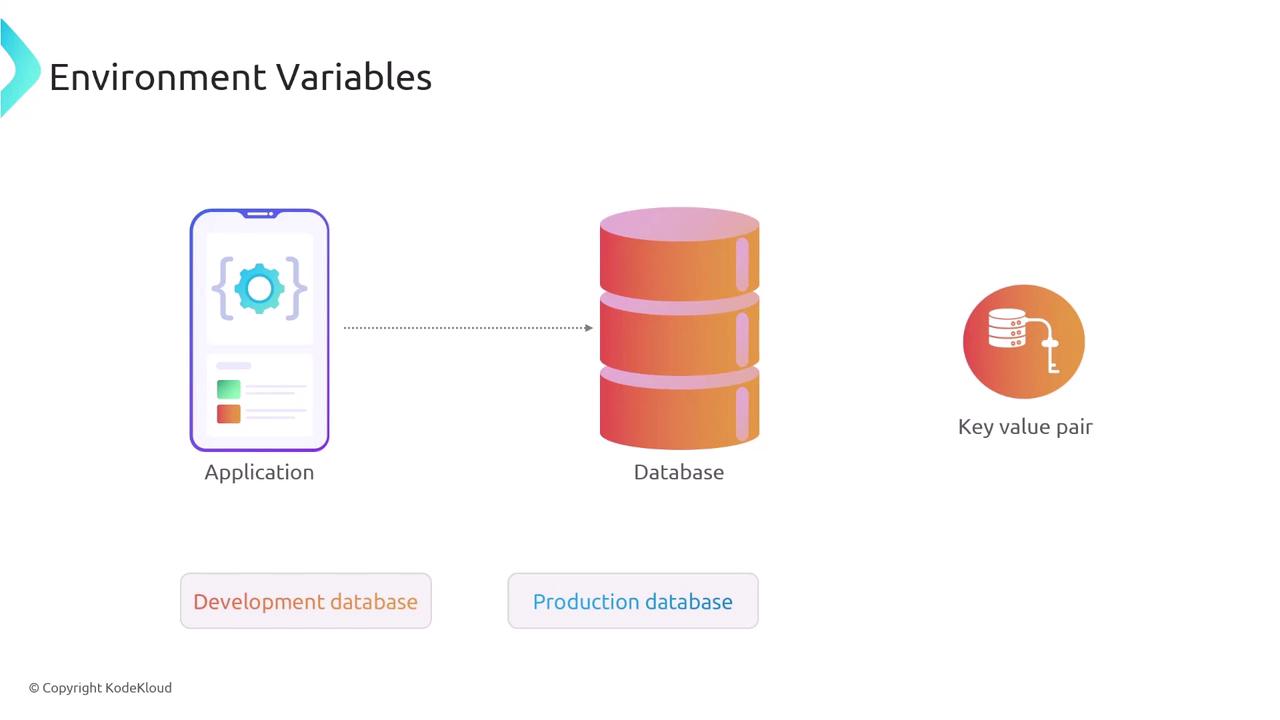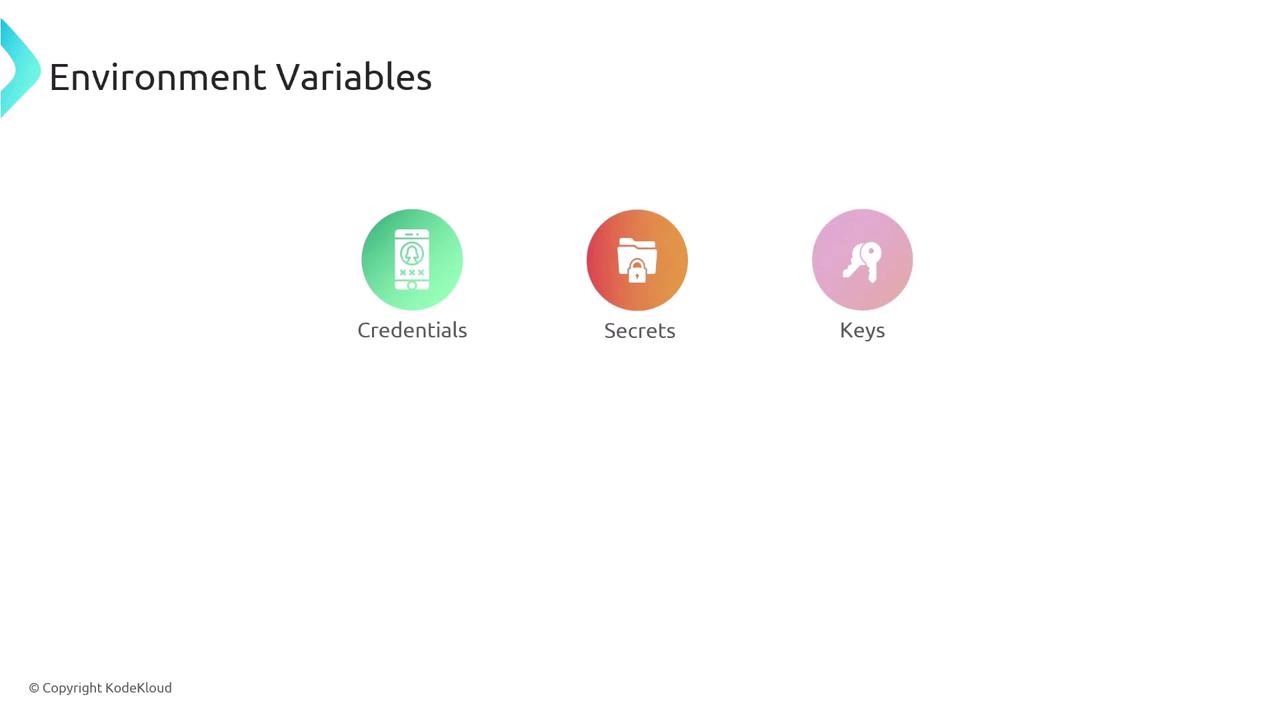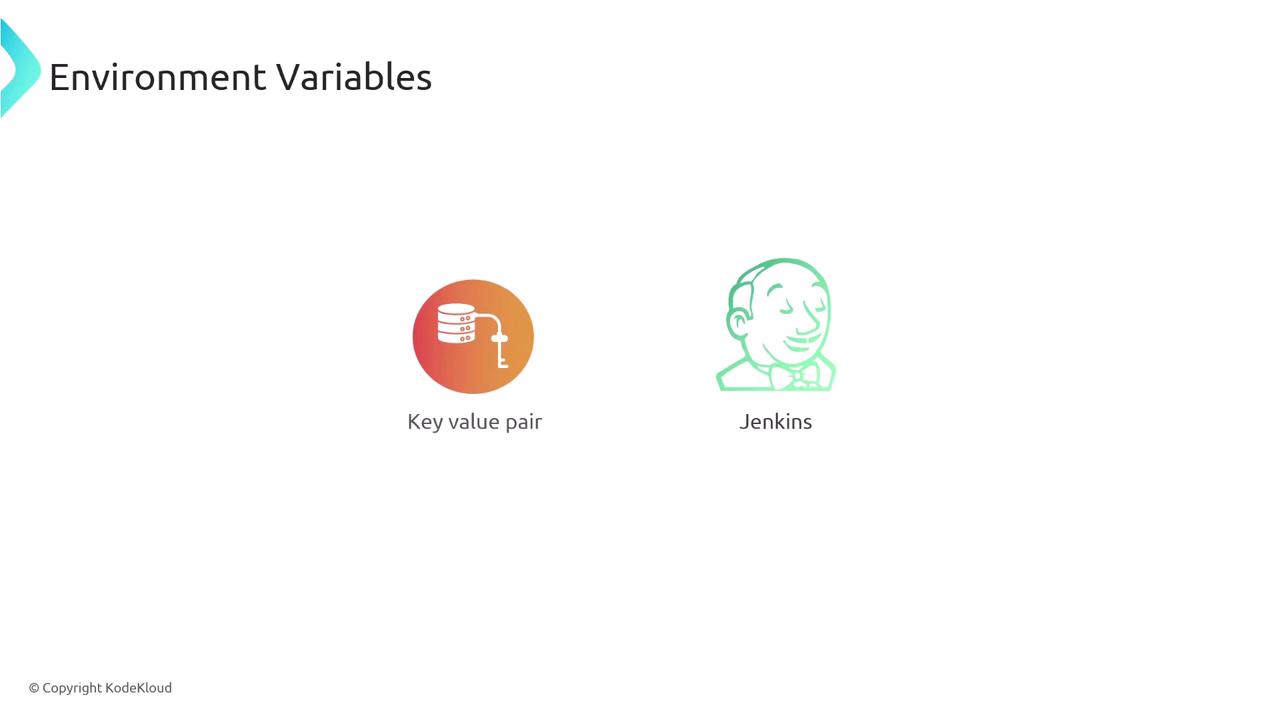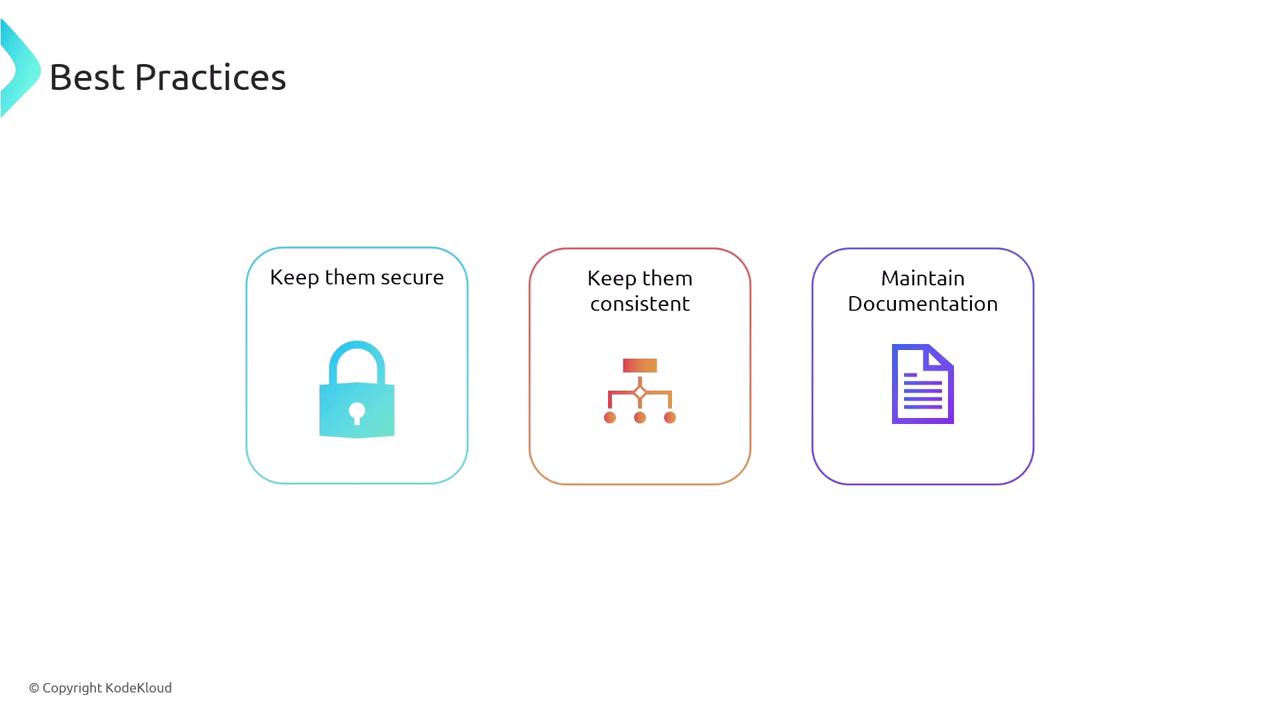Jenkins Project: Building CI/CD Pipeline for Scalable Web Applications
Jenkins
Jenkins Environment Variables
In this lesson, we explore environment variables in Jenkins and their importance in modern application deployments. Environment variables are key-value pairs that configure the behavior of processes across different environments. They allow your application to dynamically adjust settings without modifying the source code, which is especially valuable when moving between development, staging, and production environments.
Imagine an application that connects to a database. During development, the application might connect to a development database; however, in production, it needs to communicate with a production database. Hardcoding the development database's IP address is not a viable solution because the connection details must change in production. Instead, storing these details as environment variables ensures that the correct settings are applied based on the deployment target. The operating system supplies the appropriate configuration, enabling seamless transitions between environments.

By storing your database connection details as environment variables on the target machine, your application can retrieve dynamic values at runtime. For instance, when deploying to production, you update the environment variables on the production server, allowing your application to connect to the production database without modifying code.
Environment variables can store a wide range of information, including credentials, API keys, SSL certificates, secrets, SSH keys, and other critical configuration details. This approach not only adds flexibility but also enhances security by keeping sensitive data out of version-controlled source code.

Using environment variables is crucial in Jenkins because the Jenkinsfile is stored in your Git repository. Hardcoding sensitive information could expose it to unauthorized access. By leveraging environment variables, you ensure that sensitive data remains secure and is managed separately from your code.

Types of Environment Variables in Jenkins
There are two main categories of environment variables in Jenkins:
- System Environment Variables: Set on the operating system where Jenkins is running. Examples include
PATHand other system-specific settings that influence Jenkins operations. - Jenkins-Specific Environment Variables: Defined within Jenkins and can be scoped globally, per job, or even to a particular stage within a pipeline.
Scope of Environment Variables
When working with environment variables in Jenkins, they are available at different levels of visibility:
- Global: Accessible to all jobs and pipelines.
- Job-Specific: Available only within a particular job.
- Pipeline Stage-Specific: Limited to a specific stage within the pipeline, reducing variable exposure and enhancing security.
Configuring Environment Variables in a Jenkins Pipeline
The following examples demonstrate how to configure environment variables in Jenkins pipelines.
Global Environment Variable Example
The example below shows how to define an environment variable globally in a Jenkinsfile:
pipeline {
agent any
environment {
MY_VAR = 'value'
}
stages {
stage('Example') {
steps {
echo "The value of MY_VAR is ${MY_VAR}"
}
}
}
}
In this example, MY_VAR is set at the pipeline level, making it available in all stages. Referencing ${MY_VAR} will return the value 'value'.
Stage-Specific Environment Variable Example
You can also scope environment variables to a specific pipeline stage. Consider the following example:
pipeline {
agent any
stages {
stage('Build') {
environment {
HOSTNAME = "my-host"
PORT = "5432"
}
steps {
echo "Hostname is ${env.HOSTNAME}"
echo "Port is ${env.PORT}"
}
}
stage('Test') {
steps {
// HOSTNAME and PORT are not available in this stage since they were defined only in the Build stage.
echo "Testing stage: HOSTNAME and PORT are not defined here."
}
}
}
}
In this pipeline, the HOSTNAME and PORT environment variables are only accessible within the Build stage, demonstrating how scoping minimizes potential security risks.
Built-in Environment Variables in Jenkins
Jenkins provides several built-in environment variables that offer useful information about the build process. Some examples include:
BUILD_IDBUILD_NUMBERBUILD_TAGBUILD_URLEXECUTORJAVA_HOMEJENKINS_URLJOB_NAMENODE_NAMEWORKSPACE
These variables can be utilized in your pipeline scripts. For example:
pipeline {
agent any
stages {
stage('Build') {
steps {
echo "Running build ${env.BUILD_ID} on ${env.JENKINS_URL}"
}
}
}
}
In this script, the build ID and Jenkins URL are printed during the build stage.
Best Practices
- Use the Jenkins Credentials Plugin to inject secrets into environment variables instead of hardcoding them.
- Maintain consistent naming conventions across all projects to improve clarity and maintenance.
- Document the usage and purpose of each environment variable within your Jenkins jobs and pipelines.

By leveraging environment variables effectively, you can create flexible, secure, and maintainable Jenkins pipelines that adapt seamlessly to different deployment environments.
Watch Video
Watch video content